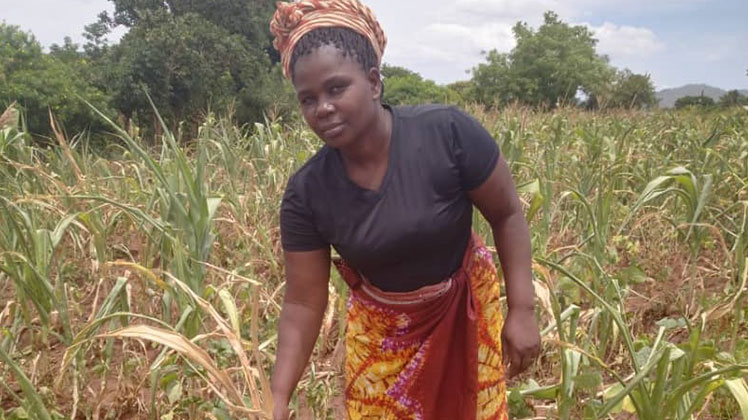Maize output to decline—minister
Minister of Agriculture Sam Kawale has said the actual maize production this year will be lower than figures indicated in the first round of crop estimates due to continued dry spells nationwide.
The minister made the clarification in the wake of the release of the estimates which show that maize production will reach 3 608 862 metric tonnes (MT), representing a 2.8 percent increase from 3 509 837MT recorded in the final round of 2022/23 crop estimates.

This year’s projected rise is attributed to the increase in hectares by three percent due to good maize prices in the previous marketing season.
Reads a statement from Ministry of Agriculture in part: “All the ADDs [agricultural development divisions], except Machinga, projected increases in maize production this season as compared to the 2022/23 season. Shire Valley projected the highest increase in maize production, 16.9 percent, while Mzuzu projected a slight increase of 2.1 percent.
“…the production of soya beans and cotton will drop by 7.2 percent and 23.0 percent due to market disincentives and higher prices for hybrid cotton seeds.”
Increased production is expected for tobacco, estimated at 144 625 369 kilogrammes (kgs), representing an increase of 20.5 percent compared to the previous marketing season
But Kawale said Malawians should expect the actual maize and other food crops production to be lower due to the dry spells induced by El Nino weather phenomenon which has affected most parts of the country, especially the Southern Region.
He said: “El Nino is hammering the country badly and we are aware that there will be food shortage.
“The President [Lazarus Chakwera] is doing everything to deal with this by allocating enough resources to the National Food Reserve Agency [NFRA] and Agricultural Development and Marketing Corporation [Admarc] and stocking it in time so that we can assist people.”
Kawale said the President is already discussing with partners to help the country to procure food to assist those who will not harvest enough.
Agriculture expert Leonard Chimwaza also cast doubt on the estimated 2.8 percent maize output increase, saying the initial crop estimates were negatively affected by rising temperatures and changes in rainfall patterns.
He said despite Malawi registering an increase in hectarage of maize, the degree of damage due to extreme weather conditions has rendered the hike less significant.
“Government should engage in intensive irrigation farming. Let the private sector be involved in the production,” said Chimwaza.
He also called for an increase in funding towards purchasing maize grain from K12 billion to K50 billion, saying this will give NFRA an upper hand on the market.
In a separate interview, agriculture policy expert Tamani Nkhono-Mvula urged the worst affected districts under Machinga ADD to diversify to crops such as cassava and sweet potatoes.
Kawale agreed with Nkhono Mvula, saying that is why in the 2024/25 National Budget government has earmarked about K100 billion to intensify crop production irrigation.
“With the funding we expected 300 000 MT of maize from irrigation this year,” he said.
Based on the estimates, production of other cereals such as rice is 33.8 percent, sorghum at 6.3 percent while wheat is at 94.7 percent.
There are also expected decreases in cassava, sweet potatoes which are deemed alternatives to maize, and pineapple production by 6.6 percent, 1.5 percent, and 48.1 percent, respectively.





